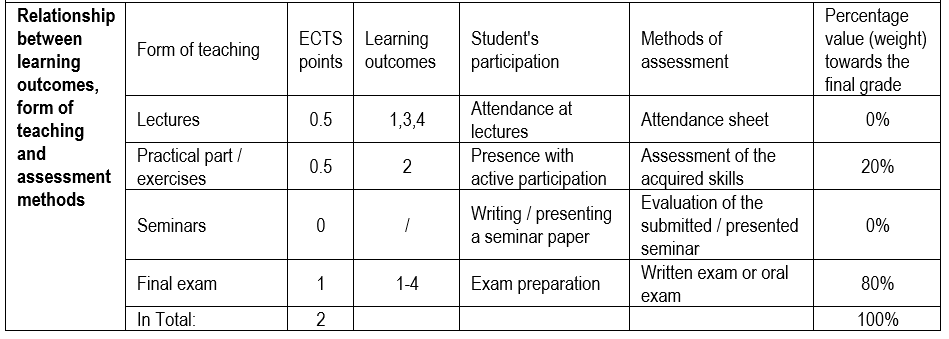The course aim is to acquaint students with the general principles of operation and the effect of dental lasers, and with the indications for the use of lasers intended for work in the oral cavity. Emphasis is placed on the use of lasers in the treatment of pathological conditions of the hard and soft tissues of the oral cavity and on the use of lasers in cosmetic dentistry and dental implantology.
The course “Usage of laser in dental medicine” consists of basic part in which are taught laser types, their parameters, methods of laser work and indications and contraindications in their usage.
Furthermore, inside of certain branches of dental medicine, effects of low-energy lasers (stimulating) will be taught, that have proven as quiet good method in healing of various lesions of oral cavity (e.g. oral lichen planus, herpetic lesions and recurrent aphthous ulcers), in stimulation of salvation, treatment of mucositis, pain reduction in dental hypersensitivity, and in foundation of orthodontic devices, as well as pain reduction after oral surgery procedures.
The more significant place takes usage of these lasers in treatment of neuropathic disorders in the head area, i.e. oral cavity, especially in case of treatment of trigeminal neuropathy (after third molar extractions), burning mouth syndrome, as well as persistent idiopathic facial pain. In periodontology low-energy lasers have significantly good effect in healing of gingival and periodontal tissue. Furthermore, in prosthetic, these lasers have proven as successful in treatment of myofascial pain syndrome, as well as in disorders of the temporomandibular joint.
High-energy lasers in dental medicine are mostly used in oral surgery and dental pathology. In that sense, students must learn main usages in oral surgery that depend on laser type, as well as lesion type. In that sense, indications are broadened removal of oral mucosal pigmentation, hyperkeratotic lesions, such as leucoplakia, and benign growths, such as fibroids, fibroepithelial polyps, mucocele, epulis, etc. Furthermore, these lasers can be used in implants, treatment of peri-implants, exposure of impacted teeth, lengthening of the clinical crown of teeth, extraction of third molars. Their advantages are reduced traumatizing of oral tissue, reduces bleeding during the surgery and post-operative reduced swelling, and improved life quality of the patient in comparison to classical surgery, e.g. with the scalpel.
In dental pathology, more precisely endodontics, the high-energy lasers are used mainly in endodontic surgery for root canal decontamination, as well as during the tooth whitening.
Required course materials:
- Lindhe J. Klinička parodontologija i dentalna implantologija. Zagreb: Globus; 2004.
- Roncati M. Nekirurška parodontološka terapija : indikacije, ograničenja i klinički protokoliu primjenu diodnog lasera (Vučićević Boras V., Milardović S. (ur.)). Milano: Media ogled; 2019. (Sveta Nedelja : Printera grupa)
Upon completion of this course, students will be able to:
- 1. Critically explain the indications and contraindications for the use of low-energy and high-energy lasers in oral pathology;
- 2. Apply low-energy and high-energy lasers in the treatment of diseases of the hard and soft tissues of the oral cavity;
- 3. Determine the indications and contraindications for the use of lasers in cosmetic dentistry;
- 4. Critically explain the use of dental lasers in the treatment of orofacial pain.



